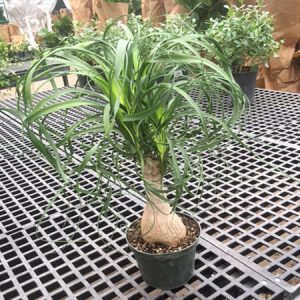Description
Fraxinus – Ash –
There are about 65 species of fast growing, deciduous, rarely evergreen trees, in this genus. They occur in woodland, mainly in the Northern Hemisphere. The leaves are opposite and pinnate, light to dark green, 2-20″ long. The flowers are borne in terminal or axillary panicles or racemes, from spring to early summer. Ashes are grown for their habit and foliage. Most have inconspicuous, petalless flowers, although some, including F. ornus and F. sieboldiana are grown for their ornamental flowers. F. americana, F. pennsylvanica, and F. uhdei usually bears male and female flowers on separate plants, both are need to produce the single-seeded, winged fruits. Ashes are excellent specimen tree for woodland or coastal gardens. They are widely planted as a street and park tree. Some are valued for their timber.
Grow in fertile, moist but well drained, neutral to alkaline soil in full sun. They need space for root system. They are tolerant of coastal salt air, exposed positions, urban pollution, and heavy clay.
Prone to Mycosphaerella leaf spot, powdery mildew, rust, brown cubical rot, white rots, wilt, anthracnose, cankers, twig diebacks, borers, leaf miners, carpenter worm, ash sawfly, fall webworm, and scale insects.
F. ornus – Flowering Ash – Manna Ash – This widely grown, bushy headed, rounded, deciduous tree from Southern Europe and Southwestern Asia grows 30-50′ feet tall and wide. It has a fluted trunk and smooth gray bark. It produces pinnate, dark green leaves, with downy underside, to 8″ long, each with 5-9 oval leaflets, turning purple-red in autumn. In late spring and early summer, bears large terminal and axillary panicles of fragrant, creamy white flowers. The fruit in narrow and winged.
Zones 6-9





